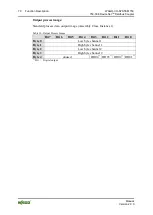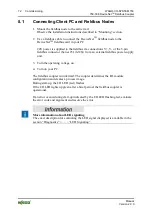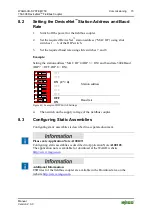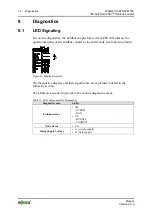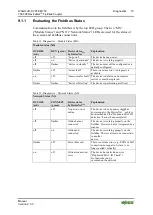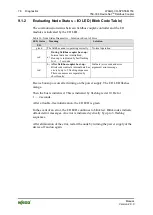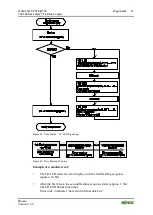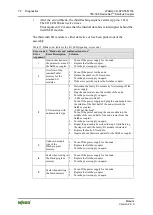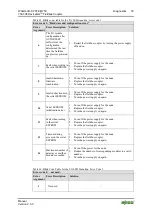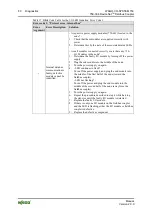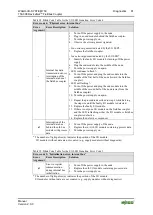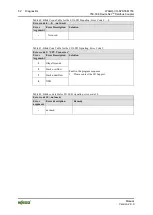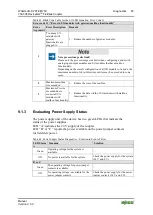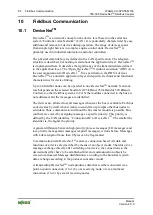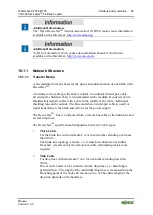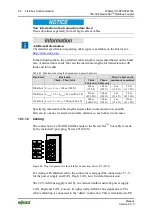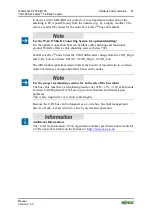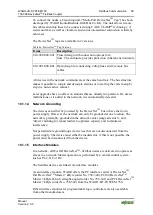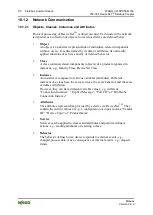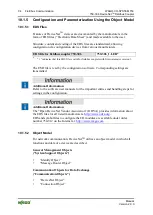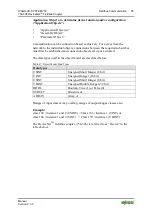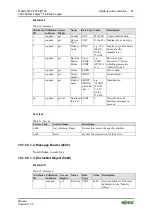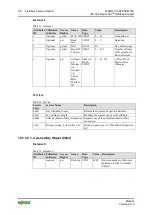
84
Fieldbus Communication
WAGO-I/O-SYSTEM 750
750-306 DeviceNet
TM
Fieldbus Coupler
Manual
Version 2.0.0
10
Fieldbus Communication
10.1
DeviceNet
TM
DeviceNet
TM
is a network concept on the device level based on the serial bus
system “Controller Area Network” (CAN). It is particularly characterized by easy
addition and removal of devices during operation. The range of devices spans
from simple light barriers to complex engine control units. DeviceNet
TM
is
primarily used in industrial automation and robot controllers.
The physical data link layer is defined in the CAN specification. The telegram
structure is described, but nothing is said about the application layer. DeviceNet
TM
is implemented here. It describes the significance of the transmitted data defined
in the application layer. The “Open DeviceNet
TM
Vendor Association” (ODVA) is
the user organization for DeviceNet
TM
. In a specification, the ODVA devices
DeviceNet
TM
as a uniform application layer and specifies technical and functional
characteristics for device linking.
Up to 64 fieldbus nodes can be operated in one DeviceNet
TM
network. Network
reach depends on the selected baud rate (125 kBaud, 250 kBaud or 500 kBaud).
Contrary to other fieldbus systems, in CAN the modules connected to the bus are
not addressed, but the messages are identified.
The devices are allowed to send messages whenever the bus is available. Each bus
node decides by itself when it wants to send data or prompts other bus nodes to
send data. Thus, communication without the bus master module is possible. Bus
conflicts are solved by assigning messages a specific priority. This priority is
defined by the CAN identifier, “Connection ID” at DeviceNet
TM
. The smaller the
identifier is, the higher the priority.
A general difference between high-priority process messages (I/O messages) and
low-priority management messages (explicit messages) is done before. Messages
with a data length of more than 8 bytes can be fragmented.
Communication with DeviceNet
TM
is always connection based. All data and
functions of a device are described by means of an object model. Therefore, for a
message exchange directly after switching on a device, the connections to the
desired subscriber have to be established first and communication objects be
created or allocated. Message distribution is according to the broadcast system,
data exchange according to the producer consumer model.
A transmitting DeviceNet
TM
node produces data that is either consumed via a
point-to-point connection (1 to 1) by one receiving node, or via a multicast
connection (1 to n) by several receiving nodes.

